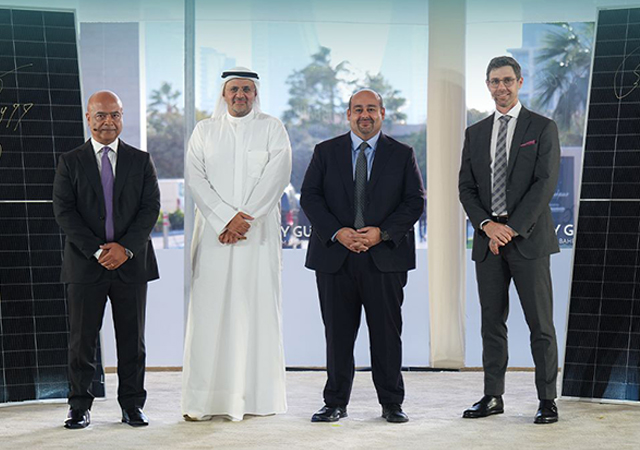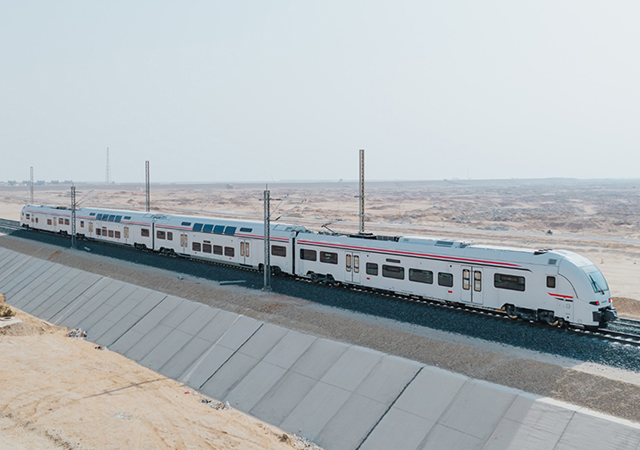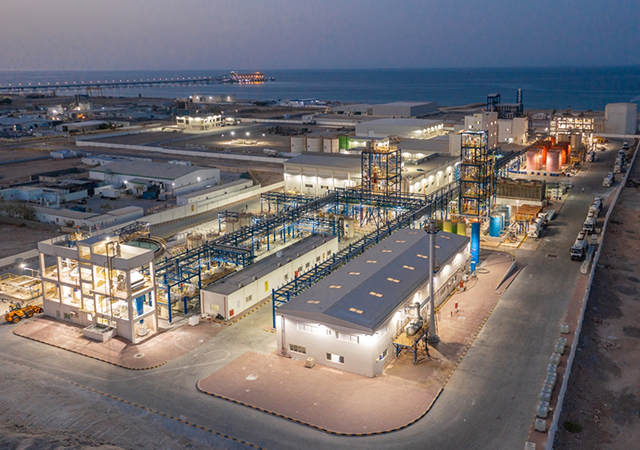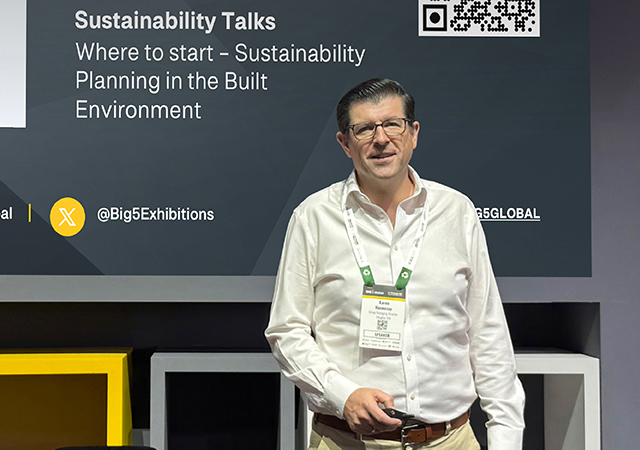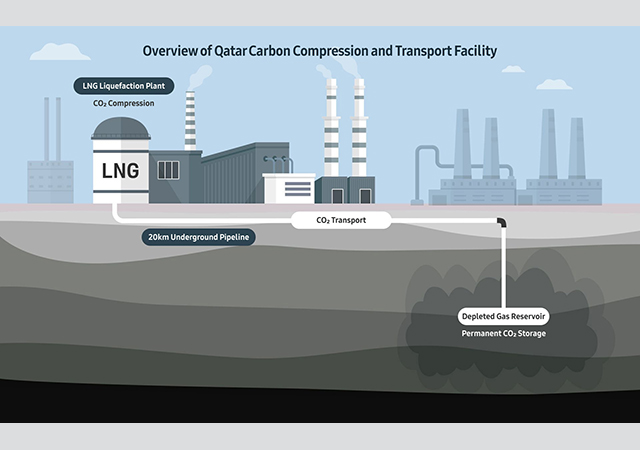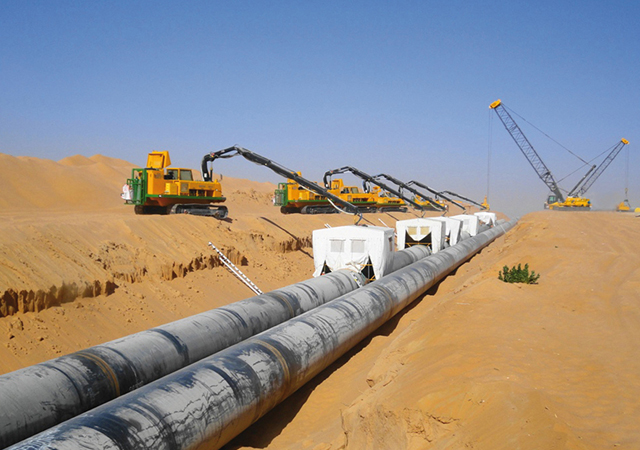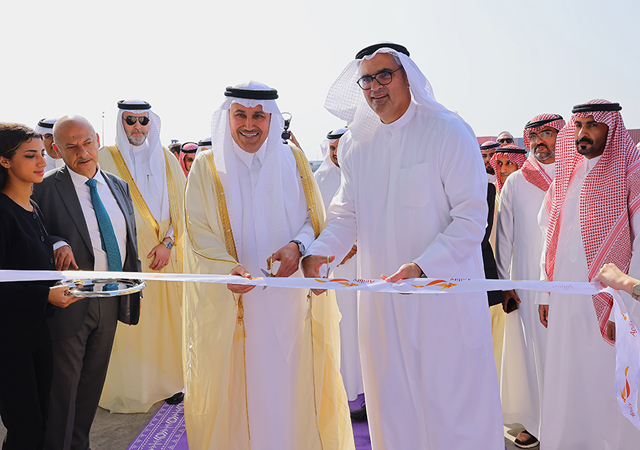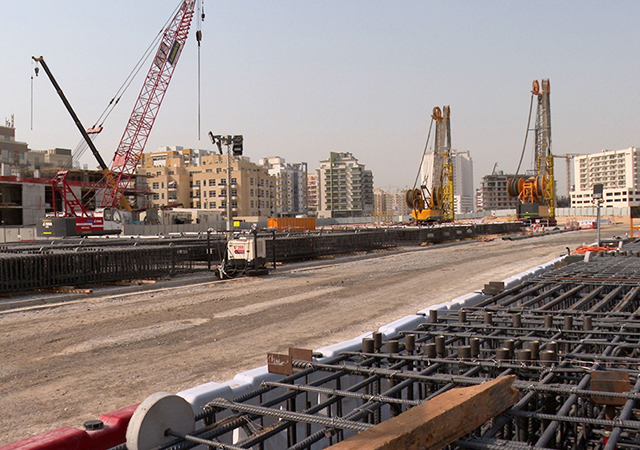

Using the skill of contractor Al Futtaim Carillion, Dubai’s dream of transforming a 7.5 sq km expanse of sandy, barren desert into a scene for one of the world’s most glamorous sports has become a reality – and that too in an appropriately fast time.
Dubai’s new, ultra-modern Autodrome features a 5.39 km FIA-approved F1 circuit, as well as five other track permutations.
Although not as fast as the Formula 1 car, the Volvo grader that helped create the track was also pretty quick, in what were demanding circumstances. “In high ambient temperatures, filters, oils and lubricants come under pressure,” says Paul Ward, Al Futtaim Carillion’s plant and transport manager. “And with long shifts, machine and operator were thoroughly tested.”
With a track temperature of 55 deg C and higher, the Volvo G780B grader had to create a road that met with the most demanding criteria. The finished track could not exceed a 3 mm change in level when a 4 m straight edge was laid on the track – which meant the road had to be perfectly smooth. This apart, the road had to be 100 per cent compacted and, using GPS positioning, follow exactly the curves and inclines determined by the track’s designers, which included motorcycle, touring car and single seat racing champions.
“We arrived on site in November 2003 and were substantially complete by the middle of May 2004,” says Al Futtaim Carillion’s genial project manager, Irishman Malachy Breslin. “Building this track was relatively easy to do,” he says. “Working in the desert is like having a clean sheet of paper, and the road itself – while admittedly to close tolerances – is essentially ordinary, a couple of layers of sub-base and three layers of asphalt.”
The initial earthmoving exercise involved shifting 1.5 million cu m and the graders had to prepare the ground for 326,160 sq m of asphalt to be laid. That’s not all; there was a further 457,402 sq m of bound gravel footpaths that needed preparing – apart from a 10,000-plus vehicle capacity car park.
With such a tight deadline (the inclusive contract was 14 months), this meant that machine uptime was a priority, and reliability was as important as strength and efficiency. Fortunately, the 19.6-tonne G780B, supplied by one of Volvo’s best performing dealers, Al Futtaim Auto and Machinery Company (Famco), provided all these attributes without compromise. The G780B is the largest of Volvo’s tandem drive graders with heavy frame, full 90/90-degree blade mobility and the highest blade pull and cutting capability in its class.
As with F1 cars, the heart of a grader is its engine, and the G780B’s turbocharged 9.6-litre Volvo power plant is a thoroughbred. In order to meet current legislation, emissions are kept at a low level due to its electronically-controlled fuel injection system and intercooler. The 181 kW of power produced is transferred to four driven wheels via the Volvo 8400 transmission system. With eight forward and four reverse speeds, this fully sequential direct-drive transmission has the right speed for all applications. There are five speeds below 16.6 km/hr for grading; a high-speed road maintenance gear and an even higher speed roading gear.
The transmission’s “Smart Shifter” provides rapid gear changing through pulse shifting, ensuring an appropriately matched forward or reverse gear. For fine grade control, the combination of a high torque engine and high displacement hydraulic pump allows operators to reduce first gear ground speed by operating a lower rpm and yet keep full hydraulic control. This helps in positioning the moldboard to suit the grade required.
In terms of moldboard control, the G780B offers a heavy moveable blade control system (HMBCS), circle turn, and blade lift, slide, tilt, and drawbar sideshift systems. Forming one of the most sophisticated devices in construction equipment today, together they allow the operator to achieve the required profile and reduce the number of passes needed – increasing productivity. The assembly of the moldboard, circle, drawbar, high lift and moveable link bar combine to cut, cycle loads, bank slope, back slope as well as provide 90-degree upward and 21-degree downward mobility. It is possible to cut a 2:1 bank slope with the moldboard completely outside the tyre profile.
Grader productivity is not just a function of weight and power – but also where the weight is and how it is applied. Accordingly, Volvo has placed the moldboard as far rearward on the machine as possible – where most of the weight is centralised. This helps pushing capability. Blade down force is also aided by the combination of a long wheelbase and bladebase, and lots of weight over the front wheels.
With its sealed and pressurised cab with efficient dust extraction and climate control, the G780B offers an excellent environment for the operator.
The operator’s life was made even easier by centrally located controls and good all-round visibility apart from the Volvo’s ROPS cab.





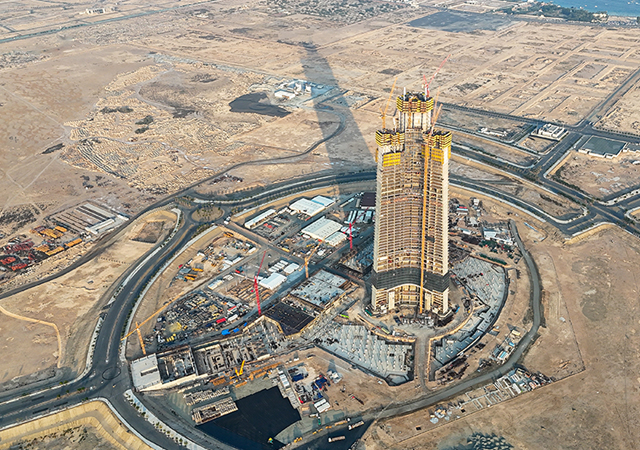


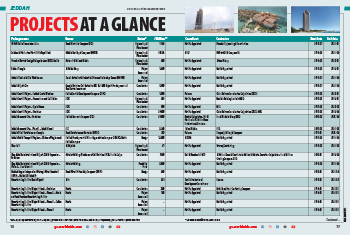
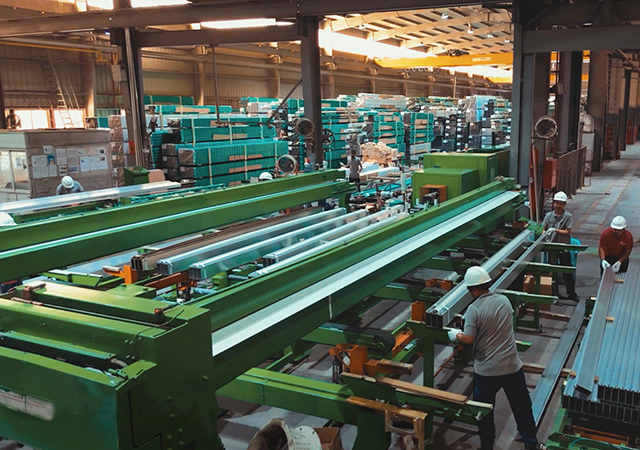




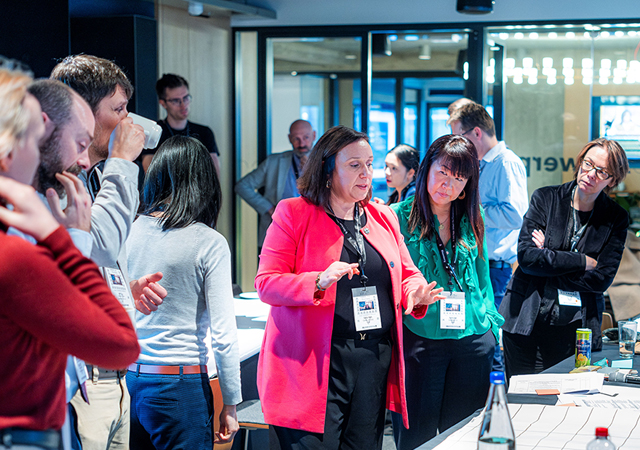

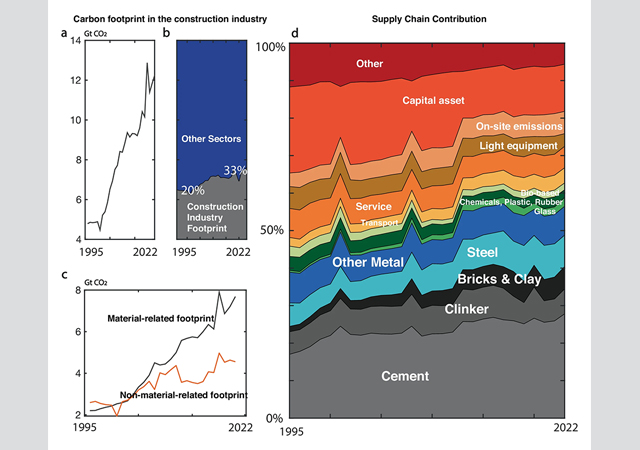
.jpg)









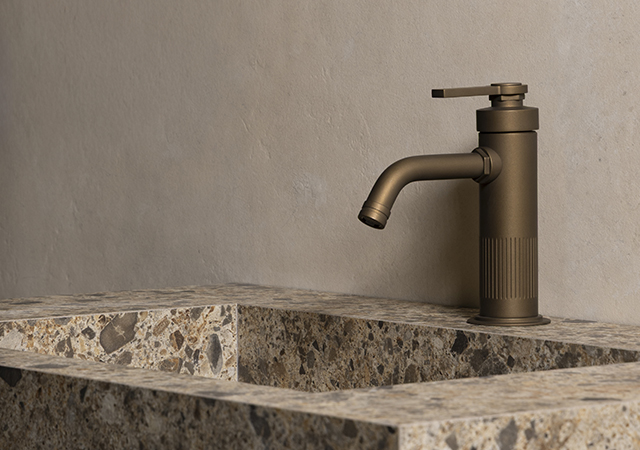

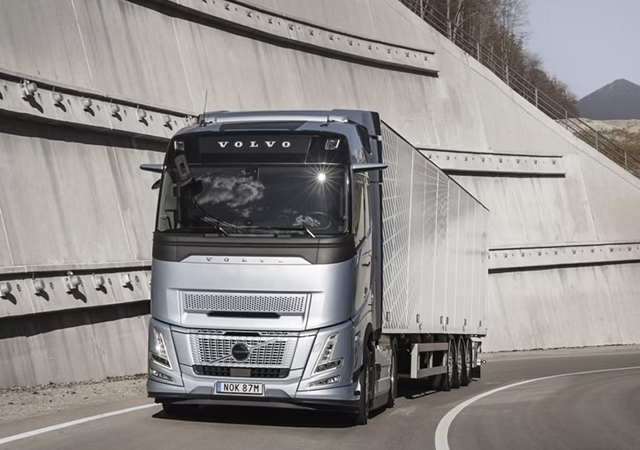

 (1).jpg)

